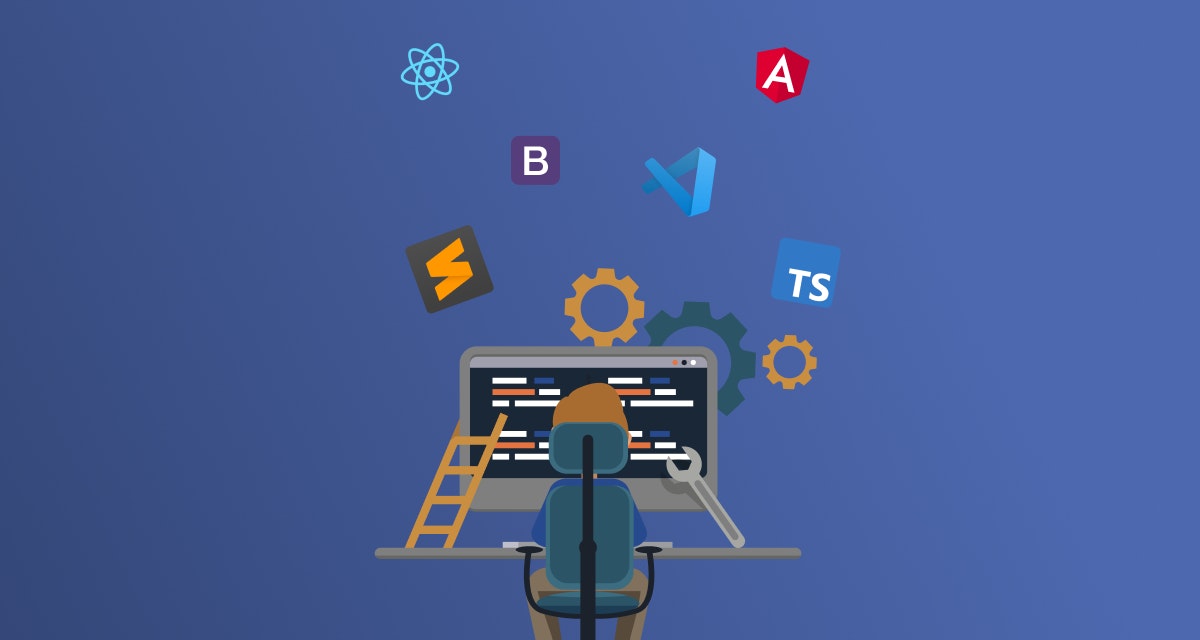Since the dawn of time, the traditional way of converting your HTML files on the server into usable information for the browser was through server-side rendering (SSR).
The web browser submitted a request for information from the server, which immediately responded by sending a wholly rendered web page to the client.
However, that is no longer the case today as static site generation (SSG) has enabled us to quickly build static sites which are SEO-friendly, lightweight and super fast. That has improved the overall user experience and amped-up digital marketing efforts more efficiently.
Suppose you want to build a sophisticated website that handles user data and custom-built content with ease and panache. In that case, you must be familiar with CMS platforms such as WordPress or Squarespace.
However, with speed rapidly becoming a key parameter for ranking high on search engines, newer websites built as SSR with SSG have become more common. That is where frameworks such as Next.js and Gatsby.js enter the picture.
Both are popular server-side rendering technologies for building static sites. Developers love both. But if you ask us which one is better to work with, you are in for a treat. This article does a detailed comparative analysis of both frameworks to make your job easier. Let us begin:
Next.js
A common React framework, Next.js, is used to develop server-rendered React apps that require little configuration. It offers an optimized developer experience. Plus, creating SSR-friendly web apps is hassle-free with this framework.
Although it supports static page generation and CDN caching, the primary focus of Next.js is to develop server-side rendered sites that generate the HTML dynamically via a server every time a new request is generated.
The development process deploys a ton of functionalities such as Automatic Code Splitting, Single File components, and Hot Code reloading for building superlative React sites. Typically, Next.js comes in handy when SSR and static page optimization support are needed.
The framework is considered ideal for setting up dynamic sites with healthy interactions with their server. It is beneficial for developing large-scale apps.
Pros
The emerging demand for innovation in digital experiences has pushed modern technologies to expand and give birth to new possibilities. That is true for the frameworks used for building sites and other web applications. Just like every framework or programming language, Next.js has its advantages, which include:
1. Super fast
With static site generators or rendering, sites built with Next.js are speedy. The HTML is rendered upon the client's request, which basically means the web page can be dynamically developed as per the data provided in the request.
2. High page performance
Next.js is an intelligent framework. That means it can easily load the CSS and JavaScript required for a specific web page. This extensibility boosts the page performance and allows users to view the page quickly.
3. SEO-friendliness
Websites are built for Google or other search engines. So it is necessary to always take SEO into account. With most client-side rendered applications, SEO does not tend to work efficiently for most single-page applications. As Google crawls for indexing purposes, it picks up a few JavaScript files and Div tags with IDs. This makes it impossible to index a site easily.
Next.js helps achieve new levels of search engine optimization. For instance, you can personalize your meta tags to improve the SEO ranking. These tags can be appended to your page so that Google, Bing and Yahoo! can index them quickly.
4. Fast MVP development
Because Next.js deploys ready-to-use components that accelerate the process of building a Minimum Viable Product (MVP), performance optimization is inevitable.
5. Real-time preview
The framework provides developers with the benefit of Hot Module Replacement or HMR, which enables them to see all the changes they make during the development process in real-time as they are carried out.
Cons
Sure, the benefits of Next.js outweigh the cons. However, that does not mean the framework is free of them. Here are a few disadvantages of using Next.js:
1. Learning curve
To properly make use of this framework, you need a dedicated person with proper knowledge. There is a bit of a learning curve involved.
2. Ongoing costs
Since Next.js does not offer built-in front pages, you have to develop your own, and that requires changes from time to time. This makes the development process a tad expensive.
3. Plugin use
You cannot utilize a lot of easy-to-adapt plugins during the development process. That stops the developers from making a lot of customization to the sites and also experimenting with the already available functionalities.
Use cases
Next.js is used for building large, multi-user websites, which have a large volume of users landing on the site at any instant. In such cases, server-side rendering helps cater to different users based on authentication. Here are three use cases where Next.js is extremely useful:
1. Ecommerce: Build high-performance, user-friendly and Google-optimized webshops.
2. Marketing: As the application is rendered on the server, load times improve significantly. This is helpful primarily in cases where visitors use slower devices or older technologies. In addition, Next.js helps marketers create a marketing-focused page with ease.
Popular sites built with Next.js
If the framework's pros have not convinced you why you should go ahead with it, then perhaps knowing which global brands have chosen to build their websites on it will. With names such as IGN, Hulu, TikTok, InVision, and Netflix Jobs associated with Next.js, it is hard not to try the technology once for precision. It really is a winner!
Gatsby.js
This framework takes pride in simplifying the hardest (most complex) parts of the web. From SEO and security to integrations and accessibility, Gatsby.js is known for creating incredible digital experiences for businesses across devices such as the desktop and mobile.
It is a modern web framework that is built on GraphQL and React. Its main aim is to deliver superior performance. The websites developed using Gatsby.js are blazing fast.
Since Gatsby.js has a unified data layer, developers can swiftly merge data from various sources and render it simultaneously.
Another thing that catches the eye of developers and businesses alike is that it has an ecosystem of its own, including themes and plugins. It is extendable by default and hosted as simple HTML pages, facilitating quicker access by storing on CDNs.
It does so by leveraging functionalities such as asset optimization, code splitting, server-side rendering, data prefetching, and so on. Gatsby.js mostly comes in handy for building websites where the number of pages is pre-decided, and the content is primarily.
Pros
Developers, marketers and business owners love using Gatsby.js for many reasons. After all, Gatsby.js is extremely developer-friendly and can also be visualized as a modern front-end framework for making web pages load faster. Here are a few pros:
1. Fast websites
Websites developed using Gatsby.js are 2-3X faster compared to other sites. In fact, you can even create a static build to make the website more quickly. That is the beauty of Gatsby.js.
2. Cost-effectiveness
Business owners prefer this framework as it allows them to grow their margin by shaving off the costs of cloud hosting and updates.
3. Plugins rich
With this framework, the developers have the liberty to choose more than one acceptable way to build the site. That is because one can use many plugins, extensions, themes and starters in the framework. You can modify almost everything that Gatsby does. Because the ecosystem is so rich, setting up a full-fledged website on Gatsby.js is a matter of minutes.
4. High security
Because Gatsby.js allows no scope for direct communication with the database, user data and other sensitive information, the websites built on it are more secure.
5. Excellent mobile performance
Gatbsy.js sticks to Google's famous architectural pattern, PRPL, Push, Render, Pre-Cache and Lazy-Load. This boosts the website performance across mobile devices.
Cons
Gatsby.js is an evolving framework, so it is not surprising that it has some downsides. Mentioned below are some cases where Gatsby.js is not an ideal choice:
1. Content-heavy websites
If you have a large blog site, generating its static version on Gatsby.js can take 15 minutes. This will invariably bring down the site speed and performance. However, if you are still keen to go ahead with Gatsby.js, opt for a solution called Incremental Builds. This shortens the build time by up to 1000X. However, its cost starts from $19 per month.
2. Constant content updation
If you have a site that requires you to update your site more often, then the Gatsby.js framework is not the right choice as the updates will not reflect on the site in real-time, as it happens in the case of WordPress or Wix.
Use cases
1. Static sites: Coding an entire website in HTML is challenging and time-consuming. Gatsby.js brings down the development hassle to a minimum.
2. Technical documentation: Gatsby.js works incredibly for any generic static site, such as those comprising documentation under 500 pages, which do not need any dynamic content.
3. Data visualization platforms: Since the framework provides server-side-rendering and ships with a heavy load of plugins, delivering a solid data layer built-in, build data visualization platforms on the framework.
Popular sites built with Gatsby.js
If the pros of the framework have not convinced you why it is the best choice for your next project, then perhaps finding out the names of global brands that have chosen to build their websites on it will. With names such as Nike, SendGrid, Braun Canada, Impossible Foods and Figma associated with Gatsby.js, it is impossible if you do not want to try out the framework.
Similarities between Next.js and Gatsby.js
Thanks to server-side rendering and server-side generation capabilities in Next.js and Gatsby.js, your website can be indexed in Google quickly and swiftly. But there are more similarities between the two frameworks than just this:
1. Powerful websites
Both can be used to build high-performance websites with terrific Lighthouse scores. The end products are SEO-friendly as they both deliver pre-rendered HTML.
2. Cool features
Hot reloading is a feature loved by all developers, and guess what? Both Next.js and Gatsby.js offer this functionality. This gives rise to other cool inbuilt features in the development such as prefetching, caching, routing and code splitting.
3. Developer experience
Both the frameworks come with extensive documentation, helping the developers leverage fantastic features for a web application. There is no need to learn anything from scratch. Having a working knowledge of React is the only prerequisite.
A comparative analysis of Next.js and Gatsby.js
Despite the upsides and downsides, similarities and use cases, both the frameworks have visible differences. Here is a bird’s eye view of the same below:
Wrapping it up
Both Next.js and Gatsby.js are incredible frameworks. But what you should select entirely depends on your project requirements.
While Next.js is ideal for developing fast-performing and SEO-friendly apps, it is also used for building a Minimum Viable Product (MVP) because of its increased use of ready-to-use components.
However, Gatsby.js is also not far behind when developing sites that load fast and can be set up quickly using lots of extensions and plugins.
If you want to develop a website that loads quickly and can be set up soon by using lots of plugins and extensions, then Gatsby.js is ideal. You need to be mindful of what you are looking to achieve with your application development project.
In a nutshell, Next.js is the most obvious choice for server-side dynamic sites, while Gatsby.js takes the cake for creating static websites. If you need help figuring out the best framework for your project, start a conversation with our expert developers today!





